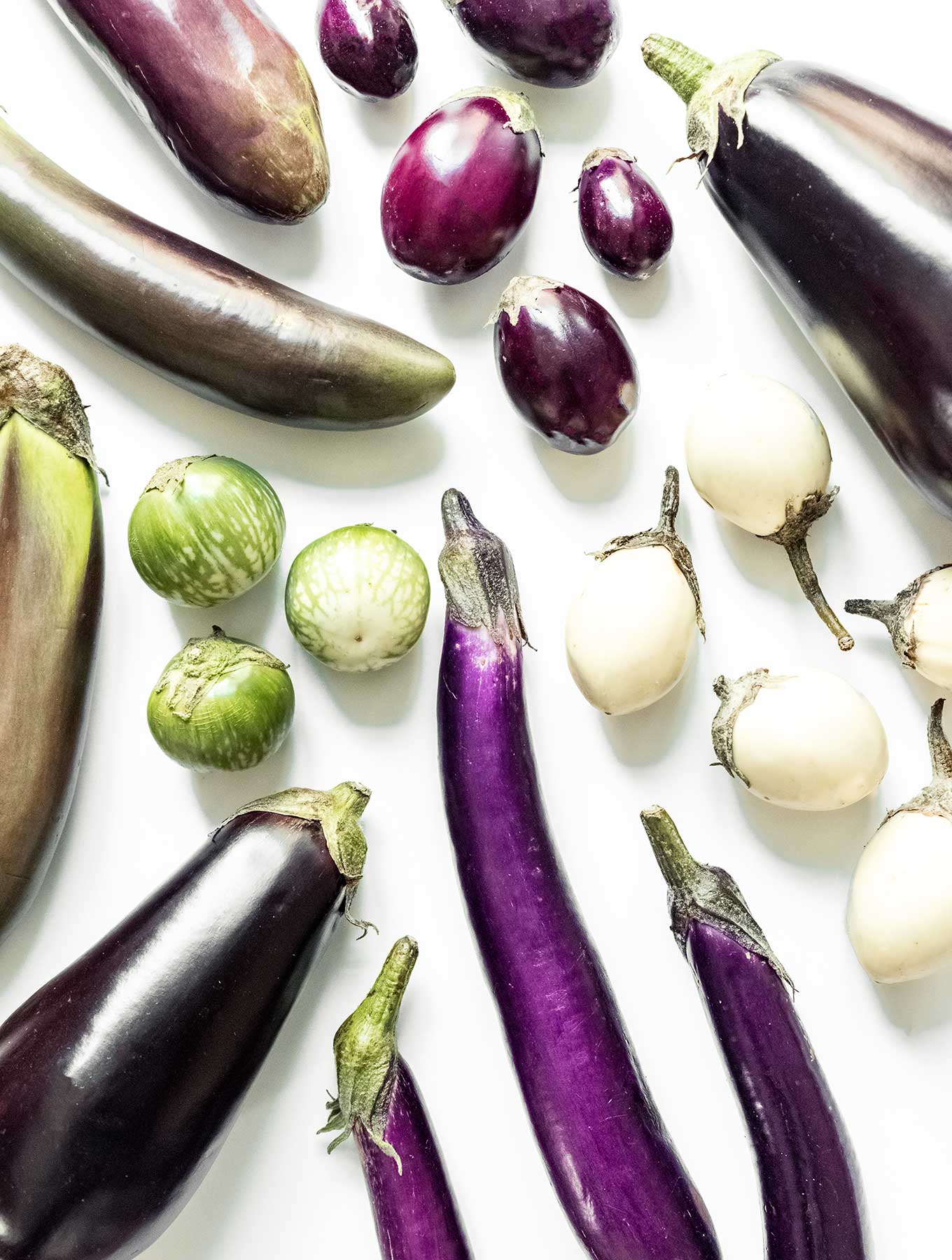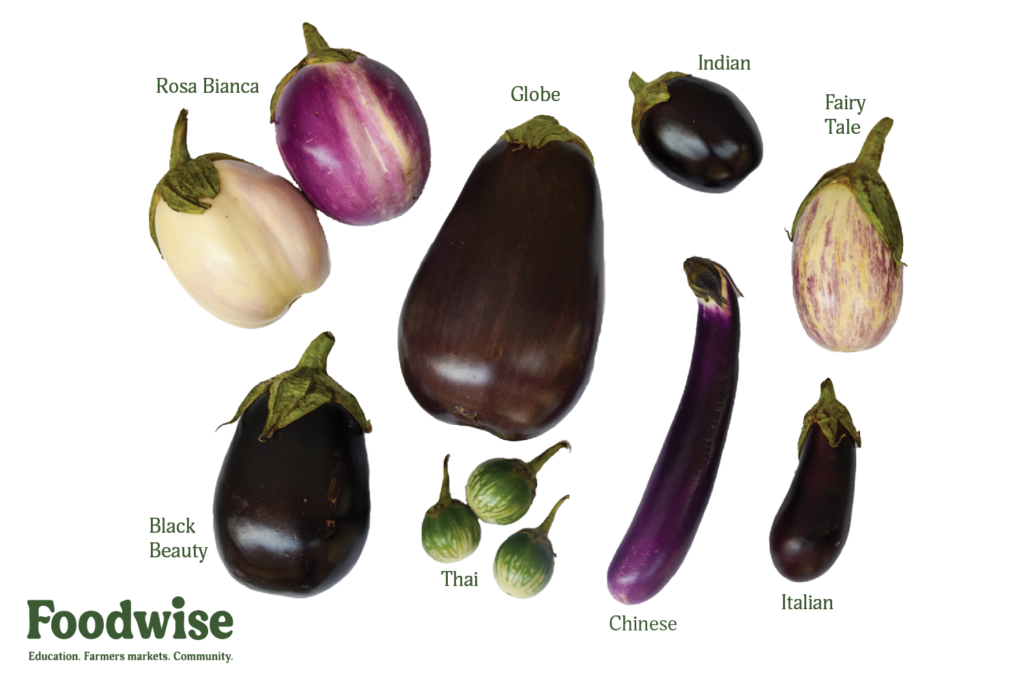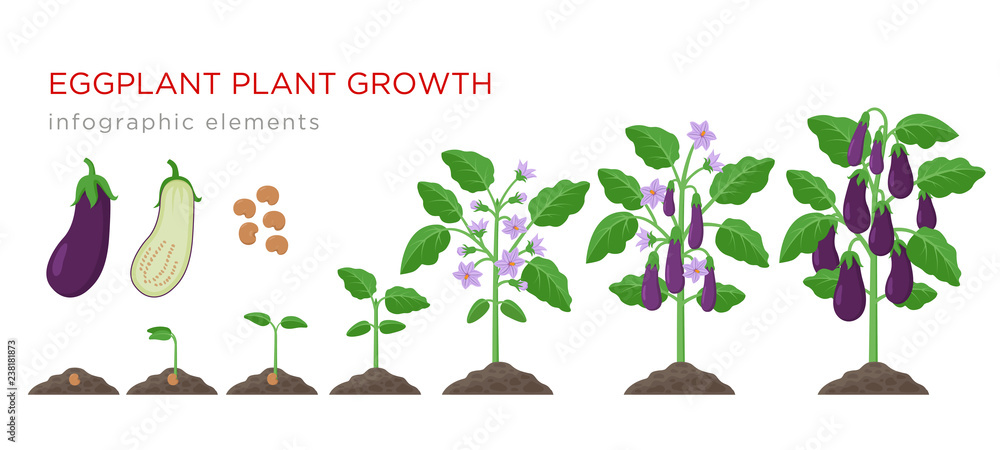How to Grow Eggplant
Complete Guide from Seed to Harvest
Eggplant (Solanum melongena), also known as aubergine or brinjal, is a delicious and versatile vegetable that belongs to the nightshade family. With its rich flavor and meaty texture, it’s perfect for a variety of dishes from Mediterranean to Asian cuisine.
Growing eggplants can be rewarding for home gardeners, with plants that produce beautiful purple flowers followed by glossy fruits. While they require warm conditions and proper care, the results are well worth the effort.
Quick Facts:
- Growing season: Warm season crop (summer)
- Time to maturity: 65-90 days after transplanting
- Planting depth: ¼ inch deep for seeds
- Spacing: 24-36 inches between plants
- Sunlight needs: Full sun (6-8 hours minimum)
- Water requirements: Consistent moisture, 1 inch per week
- Soil requirements: Rich, well-draining soil with pH 5.5-6.8

There are many varieties of eggplant available, each with unique characteristics and best uses in the kitchen. Here are some popular types worth growing:
:max_bytes(150000):strip_icc()/GettyImages-Eggplants-0de99dd69e1e48fc90d1176a0f1bec2b.jpg)
Globe (American) Eggplant
The classic large, deep purple eggplant. Great for Italian dishes, roasting, and grilling. Has a mild flavor and meaty texture.

Japanese/Asian Eggplant
Long and slender with thin skin. Quick-cooking, perfect for stir-fries and has a sweeter, less bitter flavor than globe varieties.

Fairy Tale Eggplant
Small, elongated fruits with purple and white stripes. Sweet flavor with no bitterness. Ideal for container growing and small gardens.
:max_bytes(150000):strip_icc()/Ten-Types-of-Eggplant-FT-BLOG0824-09c7aa0b86dc497c94d34cafa5e95053.jpg)
White Eggplant
Creamy white skin with firm flesh. Tends to have a more delicate flavor and less bitterness than purple varieties.

Graffiti/Zebra Eggplant
Purple and white striped skin. Tender flesh with a slightly sweet flavor. Great for grilling and roasting.
Choosing Varieties For Your Garden:
- Small spaces/containers: Fairy Tale, Thai, or other compact varieties
- Beginners: Black Beauty, Fairy Tale (easier to grow and more disease-resistant)
- Cooler climates: Early maturing varieties like Millionaire or Early Midnight
- Hot climates: Most varieties thrive in heat, especially Asian types

Stage 1: Seed Germination (10-15 days)
Start seeds indoors 6-8 weeks before the last frost date. Seeds germinate best in warm soil (75-85°F) and take about 10-15 days to emerge. Use a heating mat to maintain consistent temperature.
Stage 2: Seedling Development (2-4 weeks)
After germination, seedlings develop their first set of true leaves after the cotyledons. Provide plenty of light to prevent leggy growth. Seedlings require 14-16 hours of light daily.
Stage 3: Vegetative Growth (3-5 weeks)
Transplant seedlings outdoors after all risk of frost has passed and soil temperatures reach at least 60°F. Plants grow rapidly, developing stems and leaves. Stake plants now to provide support for future growth.
Stage 4: Flowering (6-8 weeks)
Plants produce beautiful purple or white star-shaped flowers. These self-pollinating flowers don’t require manual pollination but can benefit from gentle shaking to increase fruit set.
Stage 5: Fruit Development (8-12 weeks)
After successful pollination, small fruits begin to form. Fruits grow rapidly, developing their characteristic shape and color. Additional support may be needed as fruits get heavier.
Stage 6: Maturity and Harvest (10-16 weeks)
Eggplants are ready to harvest when the skin is glossy and firm. Fruits should be harvested while still young and tender, before seeds develop fully. Regular harvesting encourages more fruit production.
Growth Timeline:
From seed to harvest: 70-90 days total (after transplanting outdoors)
- When to start seeds: 6-8 weeks before last frost date
- When to transplant outdoors: 2-3 weeks after last frost date (soil temperature at least 60°F)
- First harvest: Typically 65-80 days after transplanting
Sunlight & Temperature
- Sunlight: Full sun (6-8 hours minimum) for best production
- Temperature: Thrives in temperatures between 70-85°F (21-29°C)
- Soil temperature: At least 60°F (15°C) for transplanting
- Frost tolerance: None – protect from temperatures below 50°F (10°C)
Soil Requirements
- Soil type: Rich, well-draining, loamy soil
- pH level: 5.5-6.8 (slightly acidic to neutral)
- Amendments: Add compost or well-rotted manure before planting
- Mulch: Use black plastic mulch to warm soil and retain moisture
Watering
- Frequency: Consistent moisture, about 1 inch per week
- Method: Water at the base to keep foliage dry
- Timing: Morning watering is best
- Signs of water stress: Wilting leaves, dropped flowers, bitter fruits
Fertilizing
- Before planting: Work in balanced fertilizer or compost
- After transplanting: Apply balanced fertilizer (10-10-10) when plants are established
- During fruiting: Side-dress with phosphorus-rich fertilizer
- Caution: Avoid excess nitrogen, which promotes foliage at the expense of fruits
Spacing & Support
Proper spacing allows for good air circulation and prevents disease:
- Between plants: 24-36 inches (60-90 cm)
- Between rows: 30-36 inches (75-90 cm)
- Depth for transplants: Same level as in containers
Support structures prevent stem breakage from heavy fruits:
- Install stakes at planting time (24-36 inches tall)
- Tomato cages work well for supporting eggplants
- Tie main stems to supports with soft garden twine
- Add additional ties as the plant grows
Container growing is perfect for eggplants, especially in cooler climates where soil warms more quickly in containers. It’s also ideal for gardeners with limited space.
Container Requirements
- Size: Minimum 5-gallon container (larger is better)
- Material: Ceramic, plastic, or fabric grow bags all work well
- Drainage: Multiple drainage holes are essential
- Color: Dark-colored containers help warm the soil
Potting Mix
- Use high-quality potting mix formulated for vegetables
- Add compost (about 25% of total volume)
- Consider adding perlite for improved drainage
- Avoid garden soil in containers as it compacts easily
Special Container Care Tips
- Water more frequently than in-ground plants (check daily in hot weather)
- Fertilize every 2-3 weeks with liquid fertilizer
- Move containers to maximize sun exposure
- Choose compact varieties like Fairy Tale, Bambino, or Patio Baby for containers
- Limit to 1 plant per 5-gallon container, or 2-3 plants in a 20-inch container
:max_bytes(150000):strip_icc()/GettyImages-126552553-5c5dd7adc9e77c0001d31c52.jpg)
Container Success Tip
Self-watering containers work exceptionally well for eggplants, providing consistent moisture and reducing watering frequency. Just be sure the reservoir never completely dries out during fruit production.
Common Pests
Flea Beetles
Small jumping beetles that create small holes in leaves.
Control: Floating row covers, diatomaceous earth, neem oil, regular monitoring.

Aphids
Small, soft-bodied insects that cluster on new growth and suck plant sap.
Control: Strong water spray, insecticidal soap, neem oil, ladybugs as natural predators.
Spider Mites
Tiny arachnids that cause stippling on leaves; create fine webbing.
Control: Regular misting to increase humidity, insecticidal soap, neem oil.
Common Diseases
Verticillium Wilt
Soil-borne fungus that causes yellowing and wilting of leaves.
Control: Choose resistant varieties, practice crop rotation, remove infected plants.

Powdery Mildew
White powdery growth on leaves that can reduce photosynthesis.
Control: Proper spacing for air circulation, avoid overhead watering, neem oil or fungicidal applications.
Blossom End Rot
Dark, sunken areas at the blossom end of fruits due to calcium deficiency.
Control: Maintain consistent soil moisture, add calcium to soil, mulch to retain moisture.
Organic Pest Management Strategies
Preventive Measures
- Crop rotation (3-4 year cycle)
- Companion planting (marigolds, nasturtiums, basil)
- Regular monitoring for early detection
- Healthy soil with beneficial organisms
- Proper plant spacing for air circulation
Organic Treatments
- Neem oil (pest repellent and fungicide)
- Insecticidal soap (soft-bodied insects)
- Diatomaceous earth (crawling insects)
- Bacillus thuringiensis (Bt) for caterpillars
- Beneficial insects (ladybugs, lacewings)
When to Harvest
The perfect time to harvest eggplant is when fruits have reached an appropriate size for their variety, have glossy skin, and are still firm to the touch. Don’t wait too long!
Signs of Harvest Readiness:
- Skin is glossy and taut
- Fruit yields slightly to gentle pressure but springs back
- Seeds are still small and not fully developed
- Cut surface is white with minimal seeds visible
How to Harvest
- Use sharp pruning shears or a knife (don’t pull fruits from plants)
- Cut the stem about 1 inch above the calyx (cap)
- Handle fruits gently to avoid bruising
- Harvest in the morning when temperatures are cooler
- Regular harvesting encourages more fruit production
Storage Tips
- Short-term storage: Store at 50-54°F (10-12°C) with high humidity
- Refrigeration: Up to 1 week in crisper drawer (but best used fresh)
- Room temperature: 2-3 days in a cool, dark place
- Freezing: Blanch slices for 4 minutes, cool, and freeze in airtight containers
- Do not store: Near ethylene-producing fruits like apples or tomatoes
Warning Signs of Overripe Eggplant
- Dull, matte skin instead of glossy
- Spongy texture when pressed
- Brown seeds when cut open
- Excessively large for the variety
- Bitter taste after cooking
Overripe eggplants are edible but may be bitter and have a tougher texture.
Harvest Timeline
- Globe varieties: Harvest at 6-8 inches long
- Asian/Japanese varieties: Harvest at 8-10 inches long
- Fairy Tale & miniature varieties: Harvest at 3-4 inches
- Days to first harvest: 65-80 days after transplanting
- Harvest season: Can continue for 2-3 months with proper care
| Problem | Possible Causes | Solutions |
|---|---|---|
| Few or no fruits forming | High temperatures (above 95°F), poor pollination, excessive nitrogen | Provide afternoon shade in extreme heat, gently shake plants to aid pollination, reduce nitrogen fertilizer |
| Bitter-tasting fruits | Harvested too late, inconsistent watering, heat stress | Harvest when younger, maintain consistent moisture, provide some shade during extreme heat |
| Yellowing leaves | Nutrient deficiency, overwatering, pest infestation | Check soil nutrients, improve drainage, inspect for pests, especially on leaf undersides |
| Stunted growth | Cold temperatures, poor soil, root-bound transplants | Wait for warm weather, improve soil with compost, ensure proper transplanting technique |
| Flowers dropping | Extreme temperatures, drought stress, poor nutrition | Maintain consistent moisture, add balanced fertilizer, provide optimal growing temperatures |
| Small, deformed fruits | Poor pollination, insect damage, nutrient deficiency | Hand pollinate flowers, control pests, ensure adequate calcium and potassium |
Expert Growing Tips
- Pruning: Remove bottom leaves and suckers for better air circulation and disease prevention.
- Support early: Install stakes or cages at planting time to avoid root damage later.
- Warm soil: Use black plastic mulch to warm soil in cooler regions.
- Season extension: Cover plants with row covers or cloches for early and late season protection.
- Succession planting: Plant a second crop in mid-summer for fall harvests in warm regions.
Growing eggplant can be incredibly rewarding, with beautiful plants that produce delicious and versatile fruits. While they require some attention to thrive, the results are well worth the effort.
Remember that eggplants love heat, consistent moisture, and fertile soil. By providing these essentials and staying vigilant against pests and diseases, you’ll be rewarded with a bountiful harvest that can be used in countless delicious recipes. Happy Gardening…





